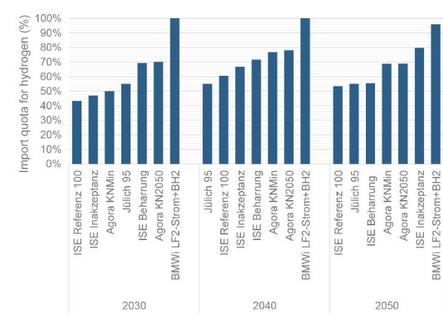
1 minute read
KEY PROJECT FINDINGS
Hysupply Germany Meta-Analysis
The working paper from HySupply Germany highlighted the need for emission reduction in Germany, which will be facilitated through imported renewable hydrogen and its derivatives The demand for imported hydrogen derivatives is expected to be close to 90% of total hydrogen demand in Germany (Figure 2) The projected demand for hydrogen and derivatives in Germany is estimated to be 80 TWh by 2030 and increasing to between 400800 TWh by 2050.

The second aspect that the Meta-Analysis highlighted that long-distance transport of hydrogen and its derivatives between Australia and Germany is technically feasible with renewable ammonia and methanol being overall the most mature pathways Other carriers such as liquid organic hydrogen carrier (LOHCs) and liquified hydrogen was considered The study identified potential import terminals in Bremerhaven, Brunsbüttel, Hamburg, Rostock, and Wilhemshaven as well as Antwerp and Rotterdam
Studie im Auftrag des Nationalen Wasserstoffrats,” 2021




